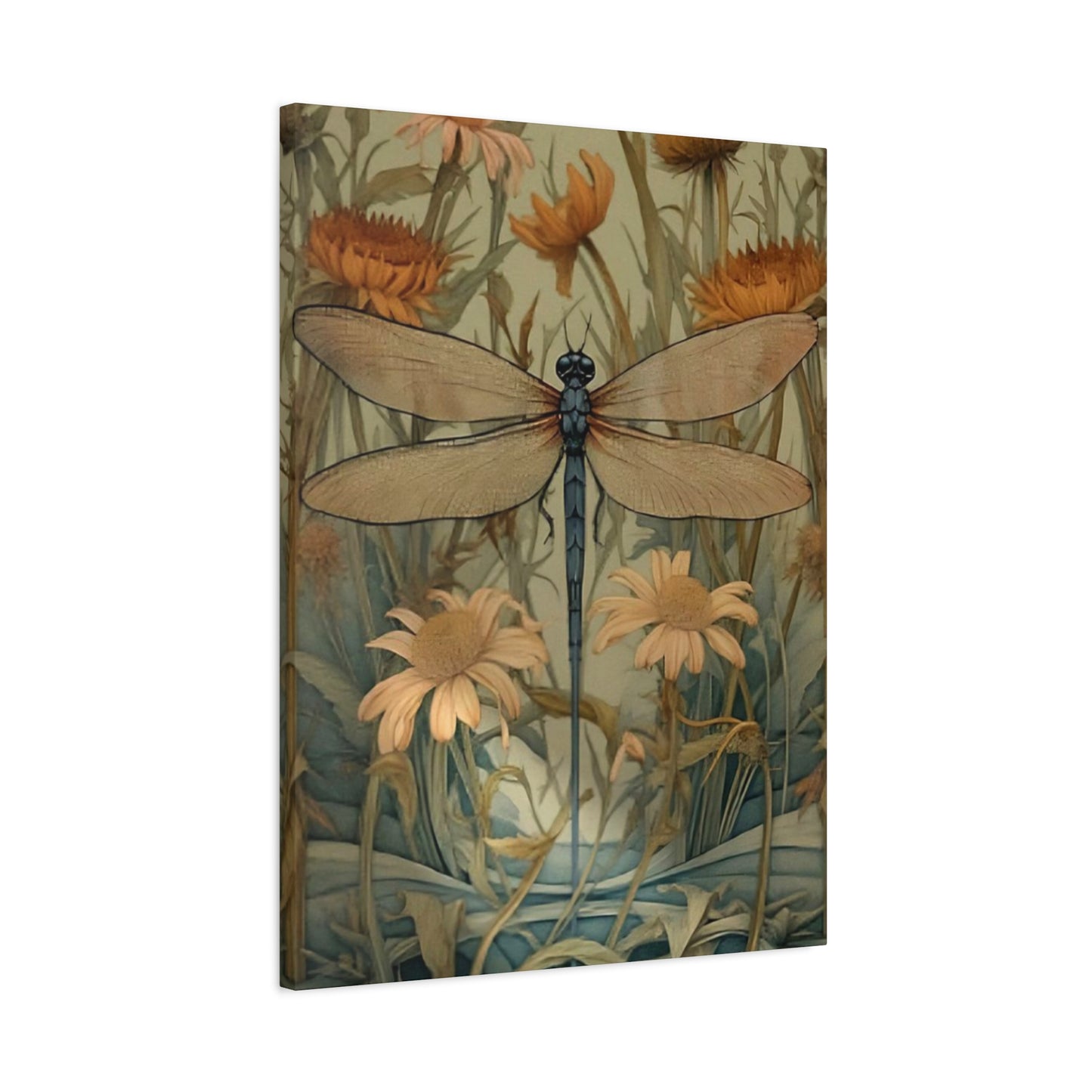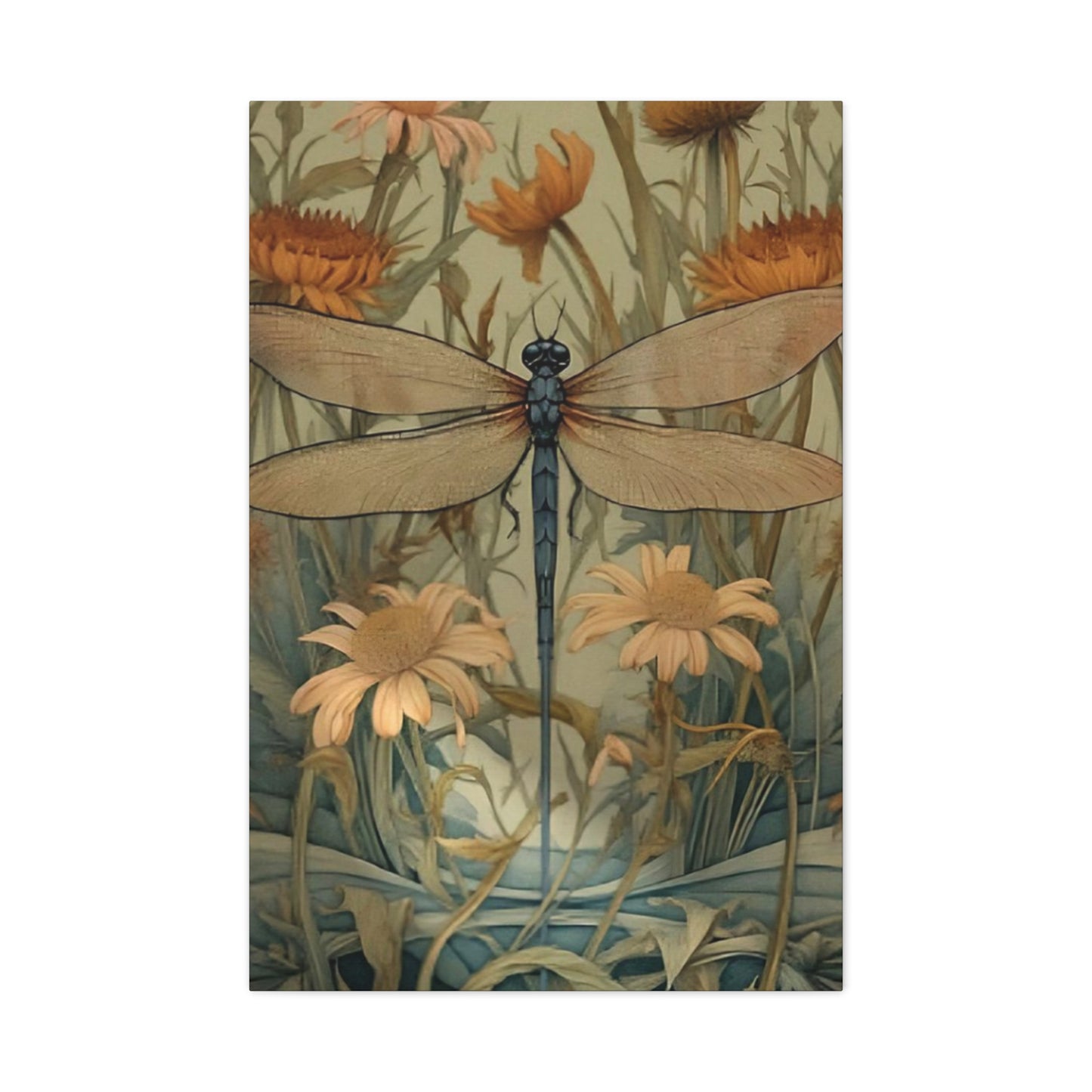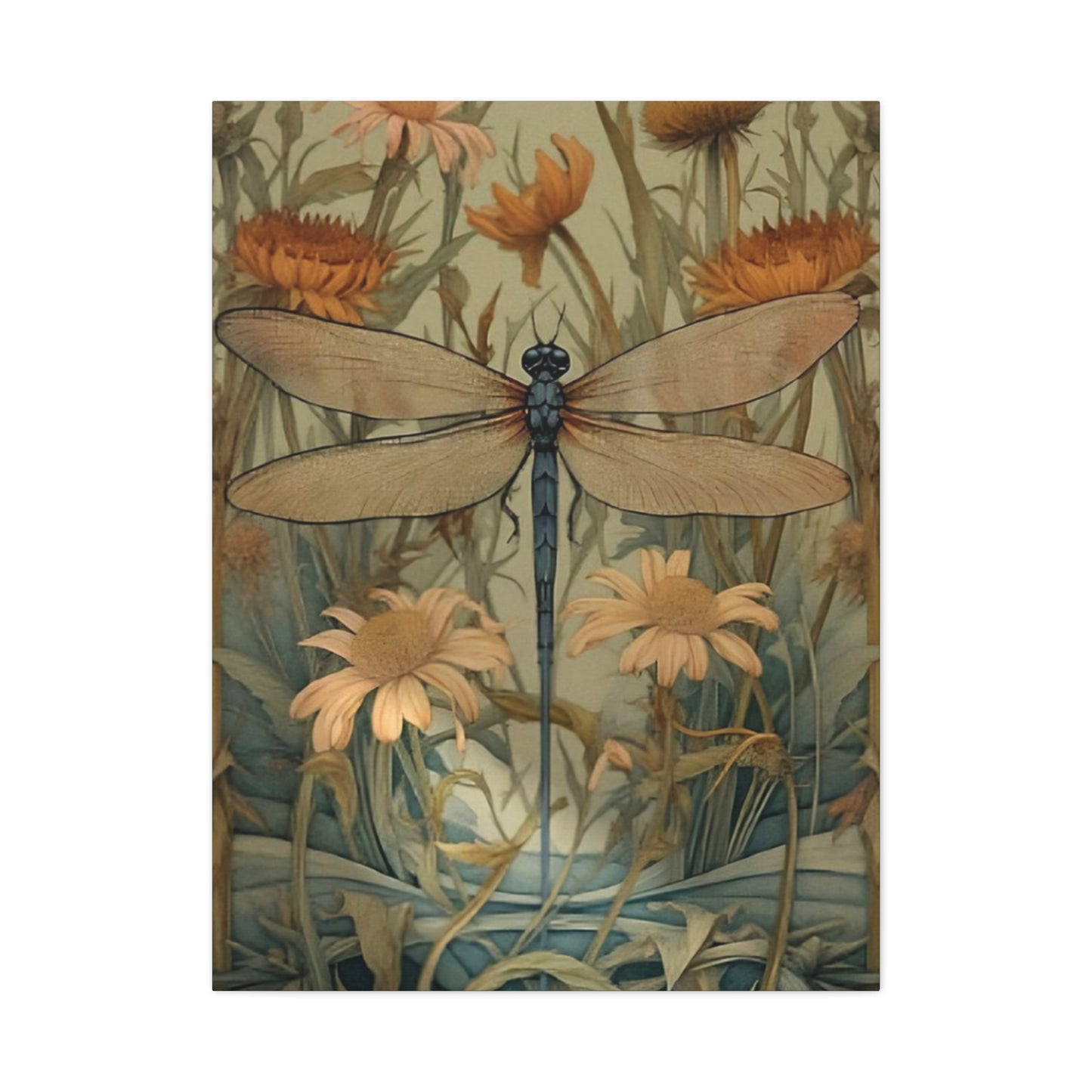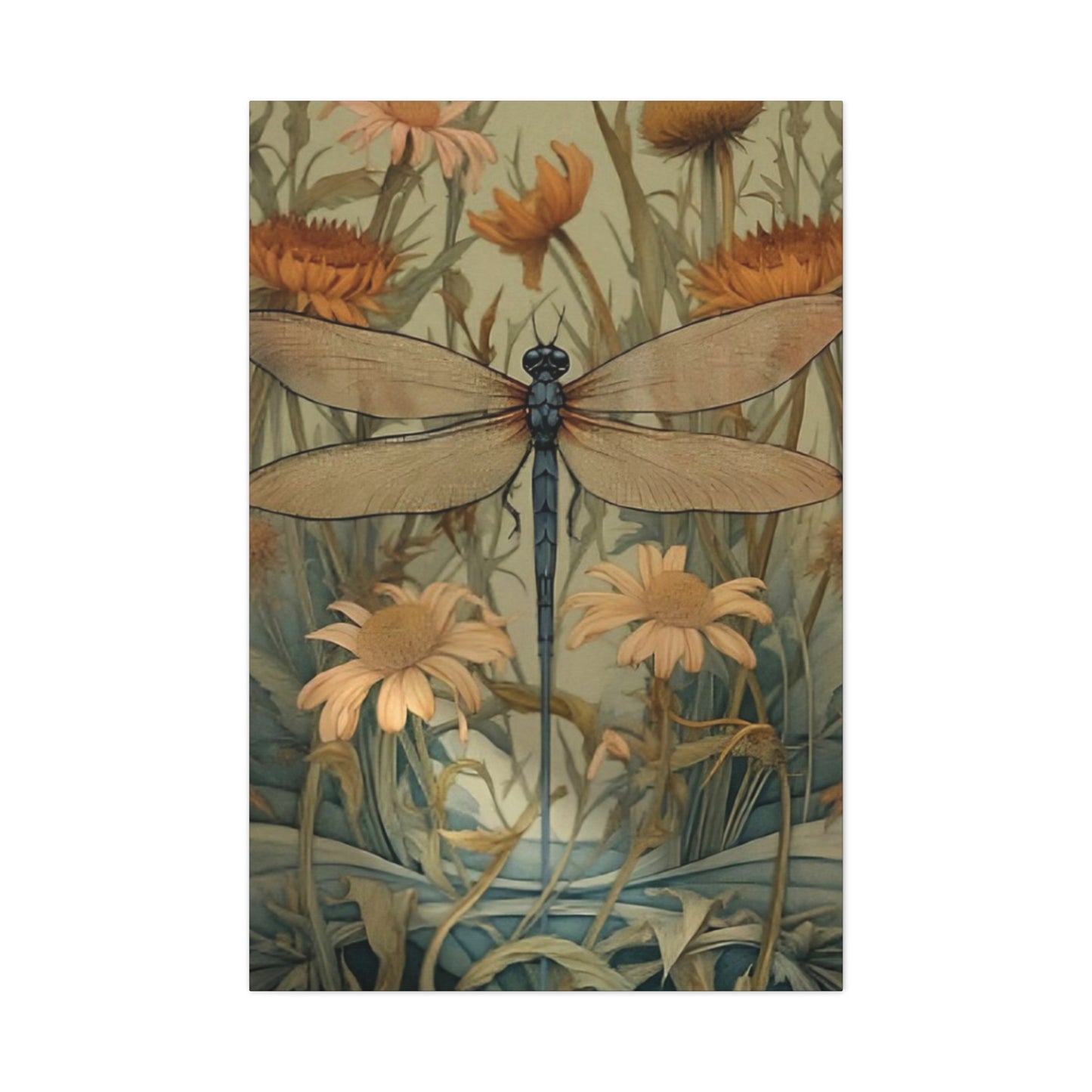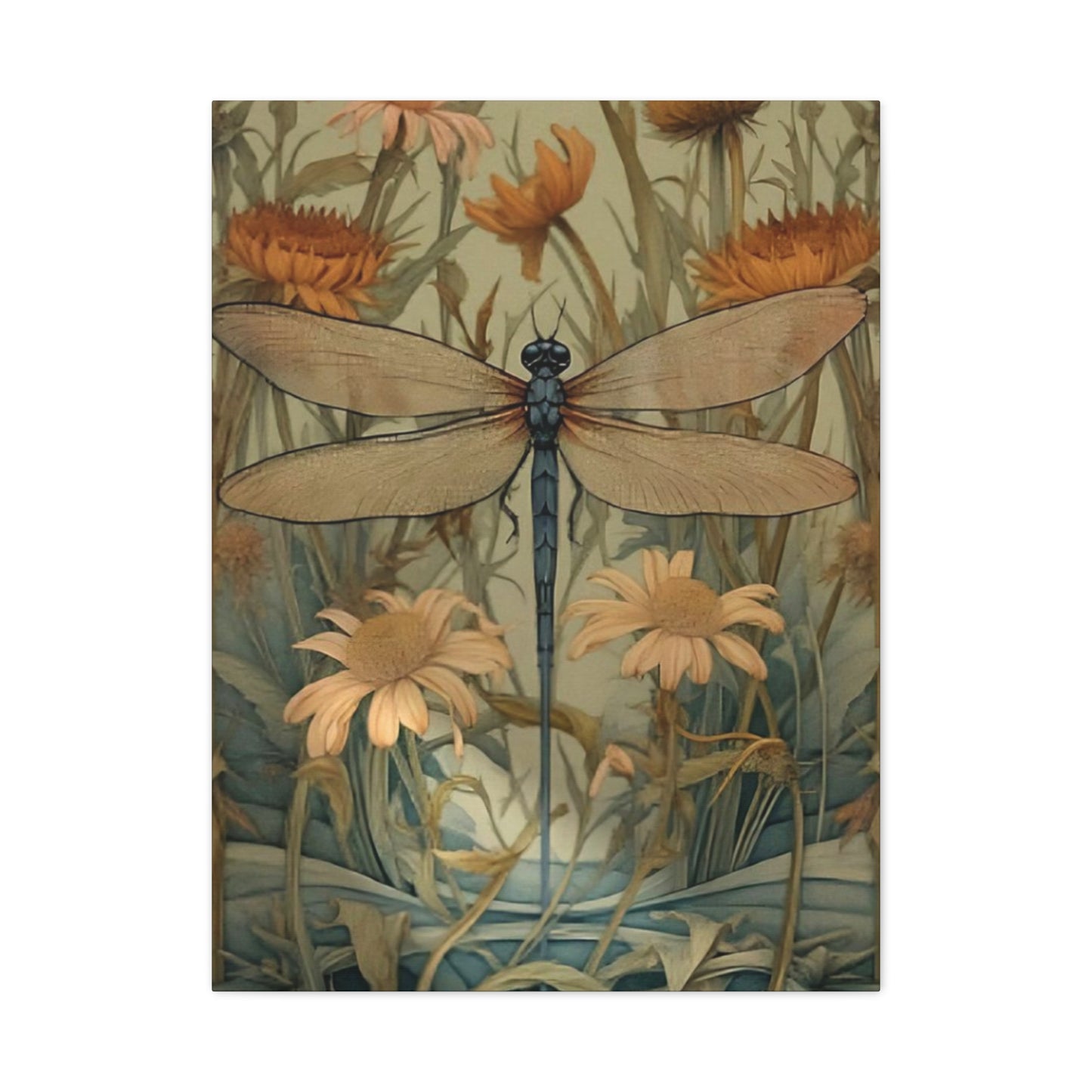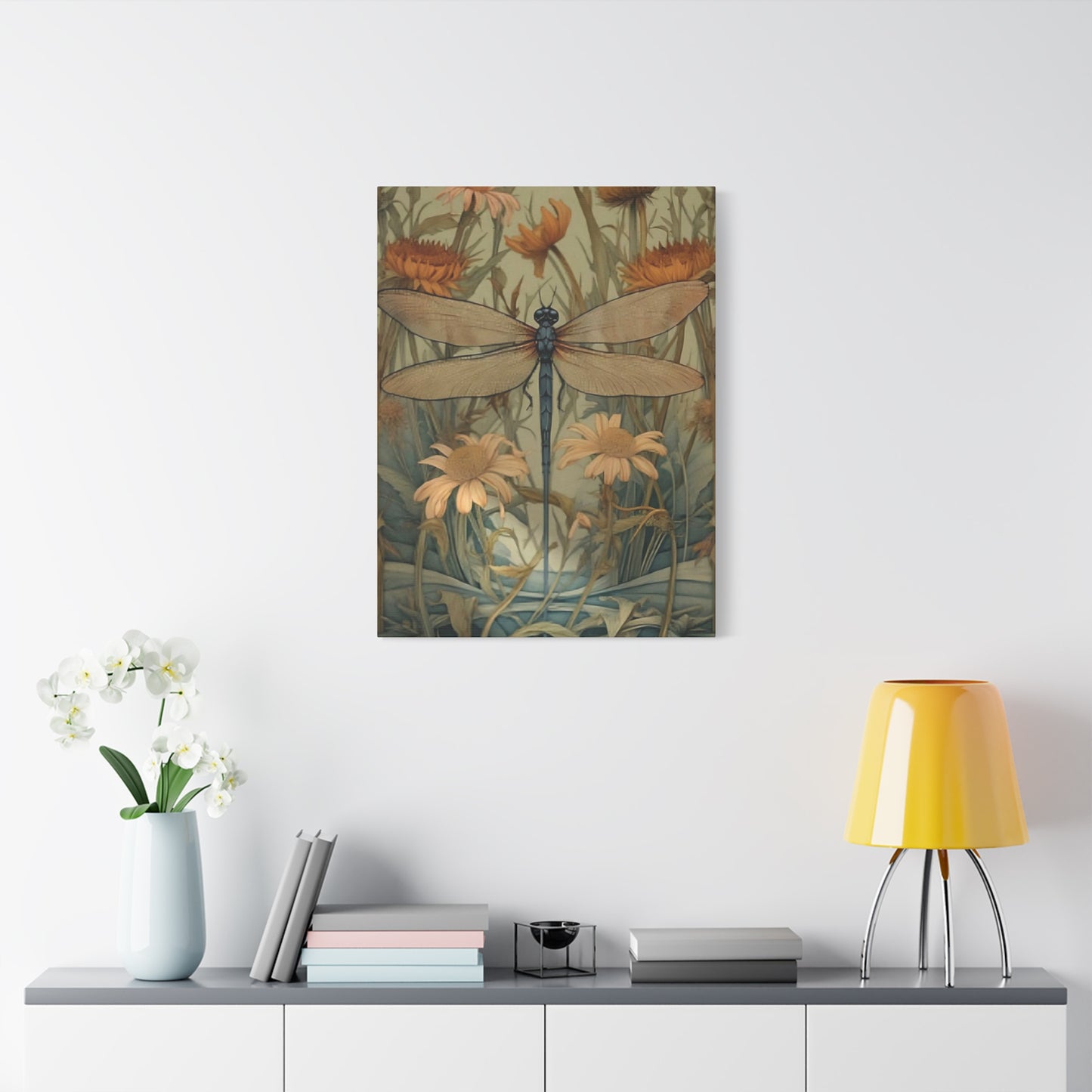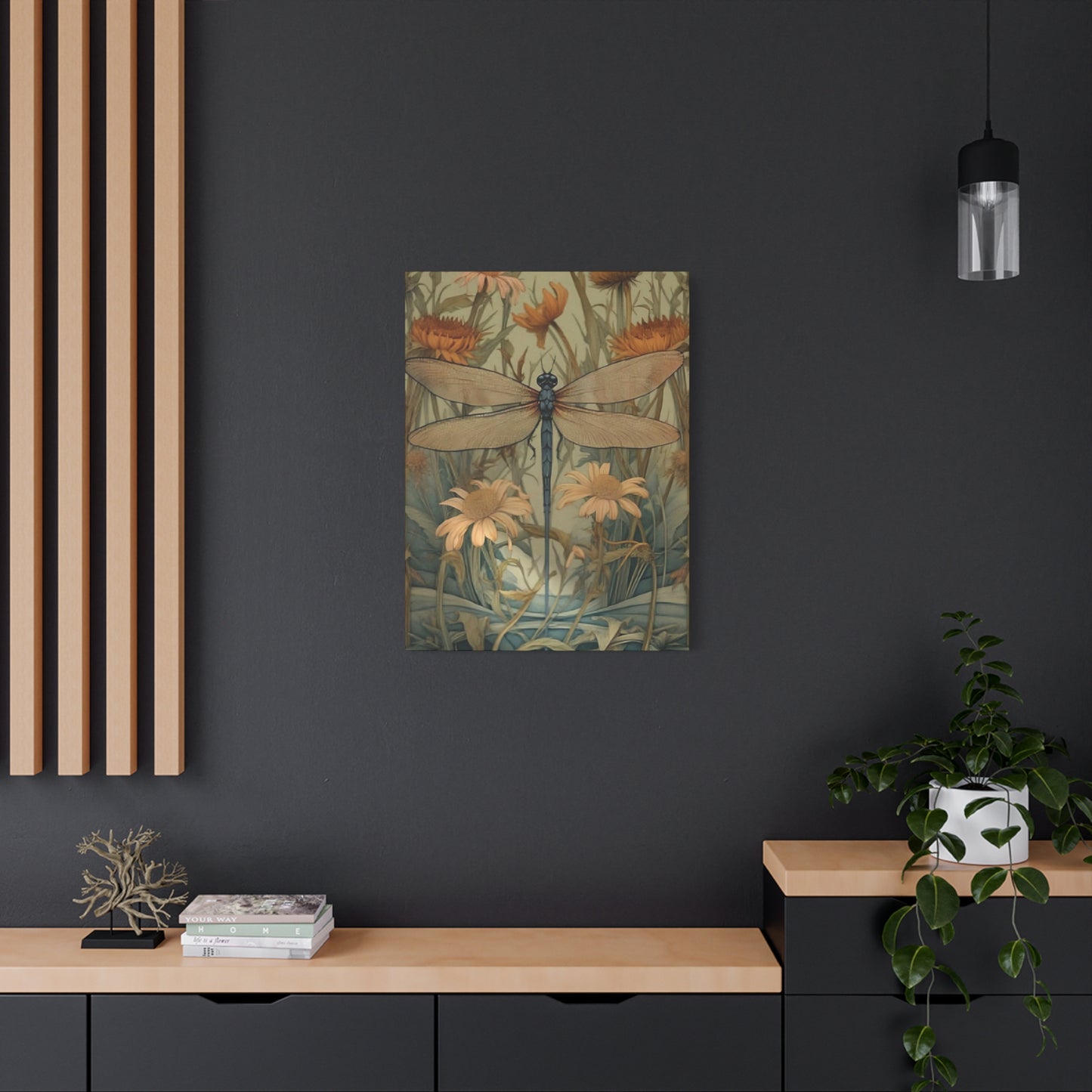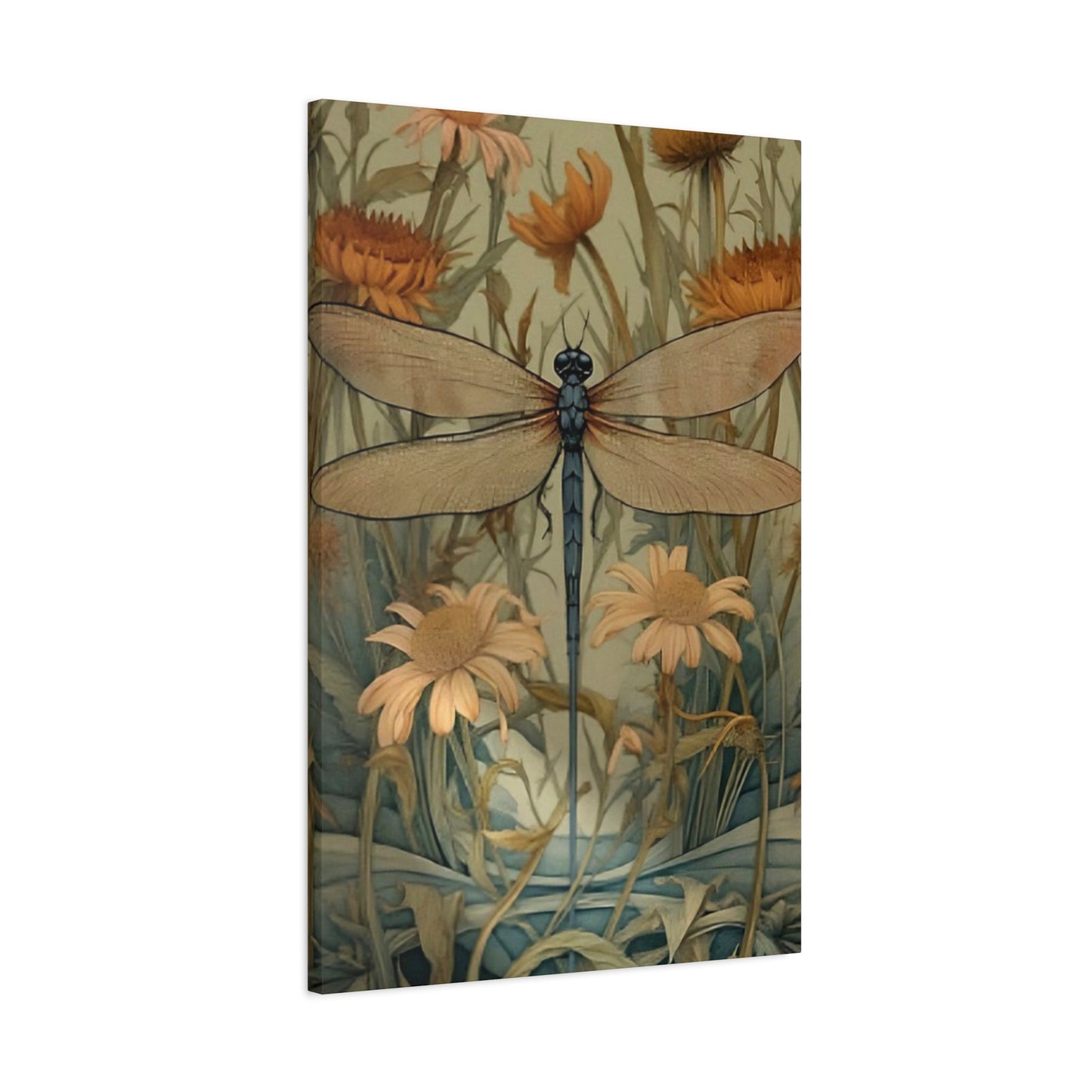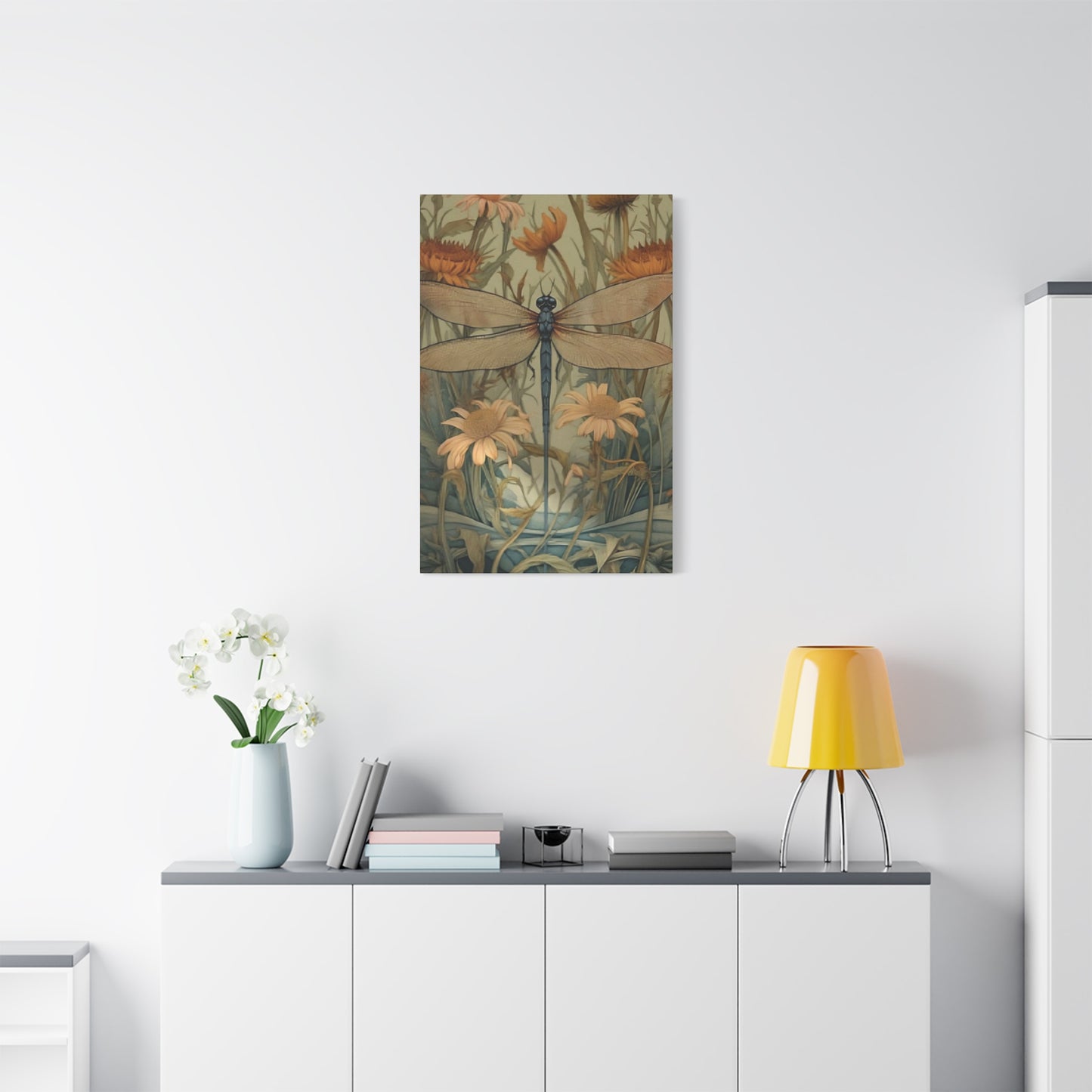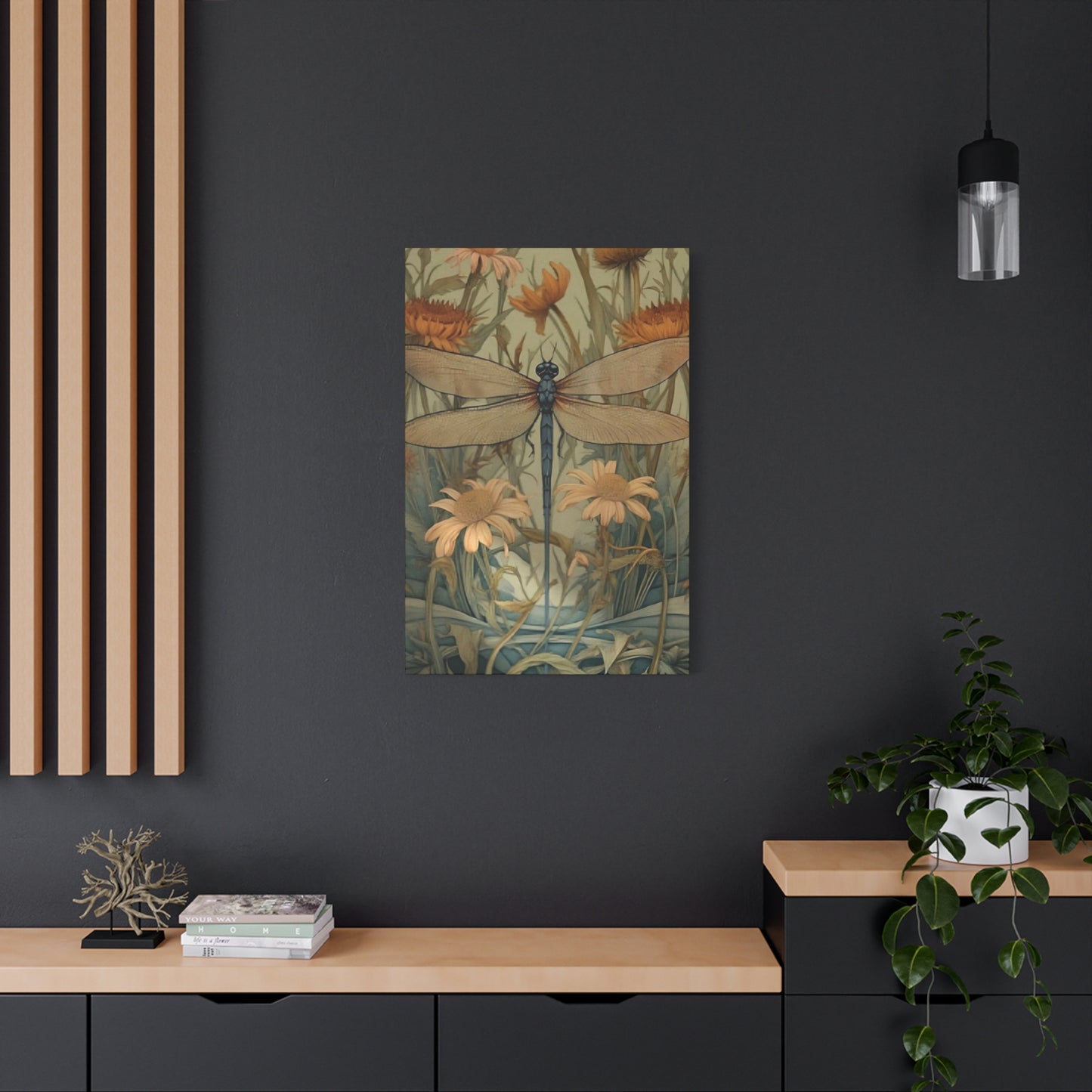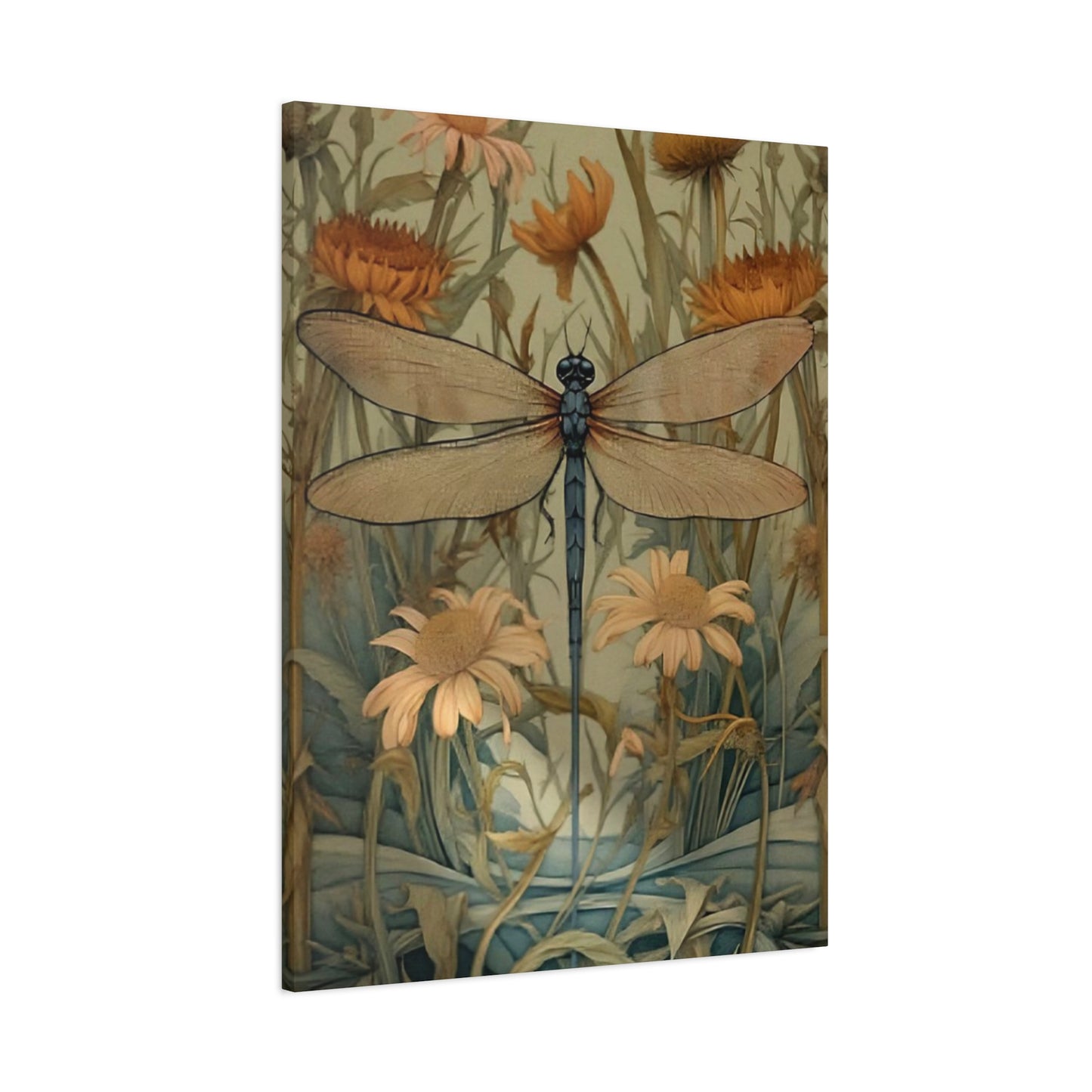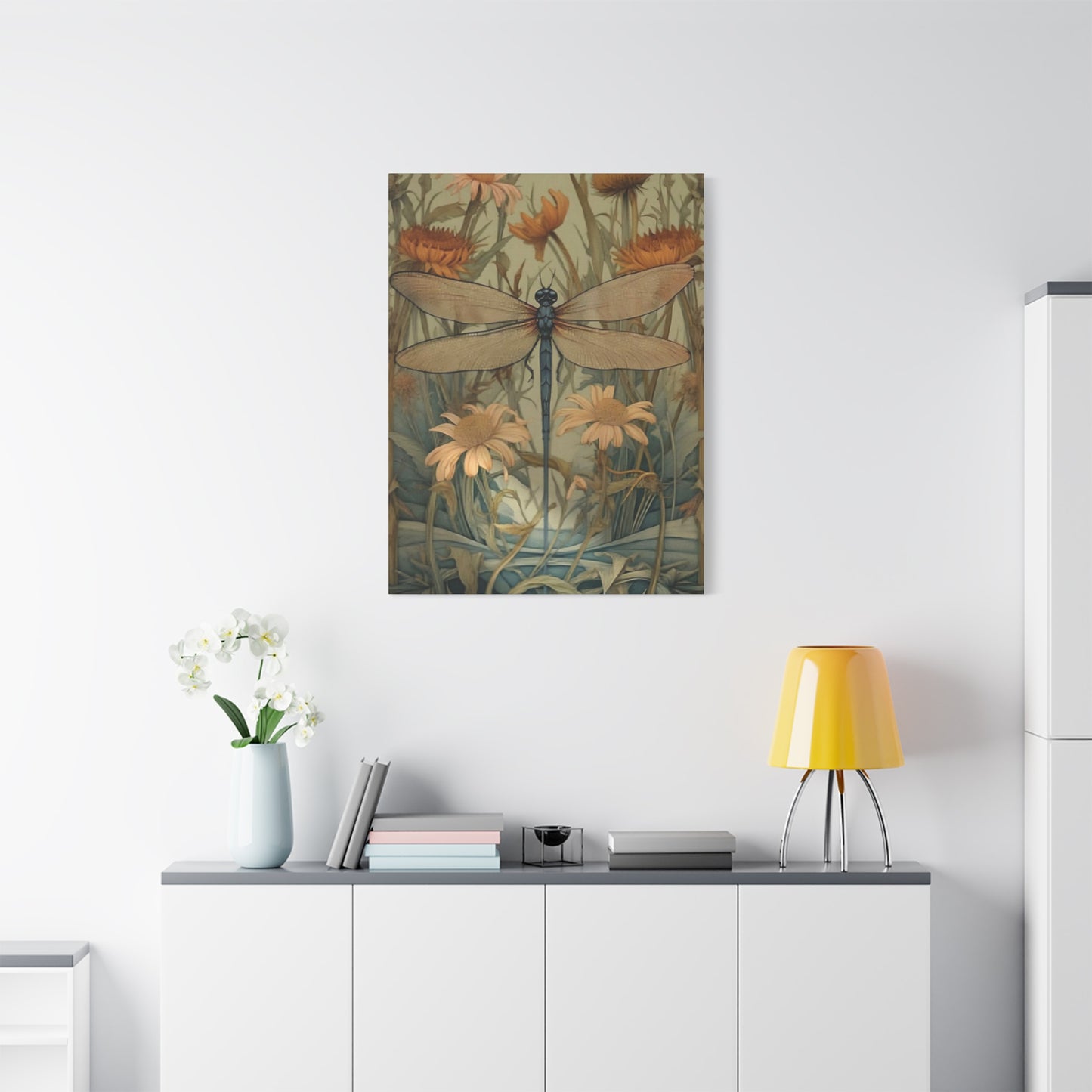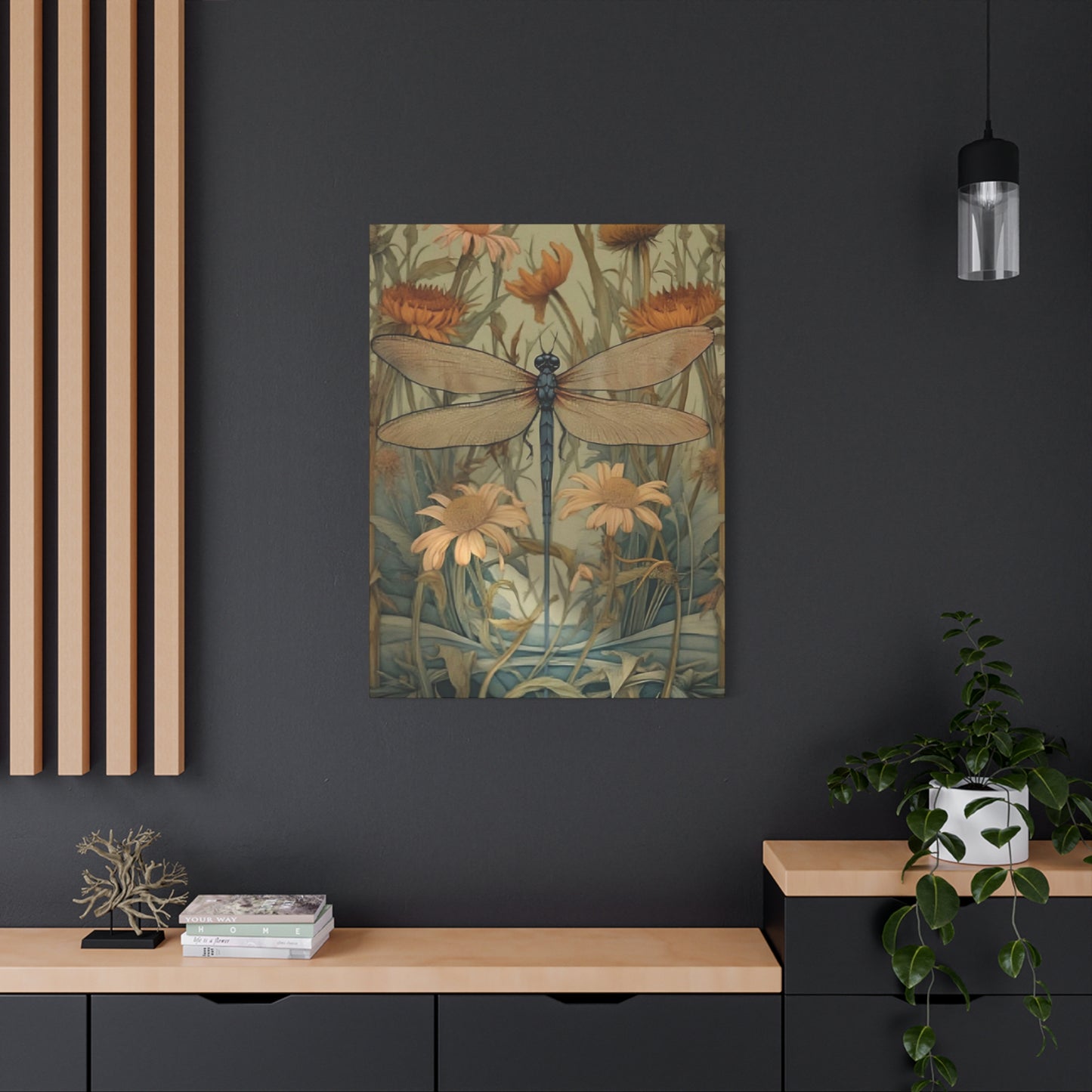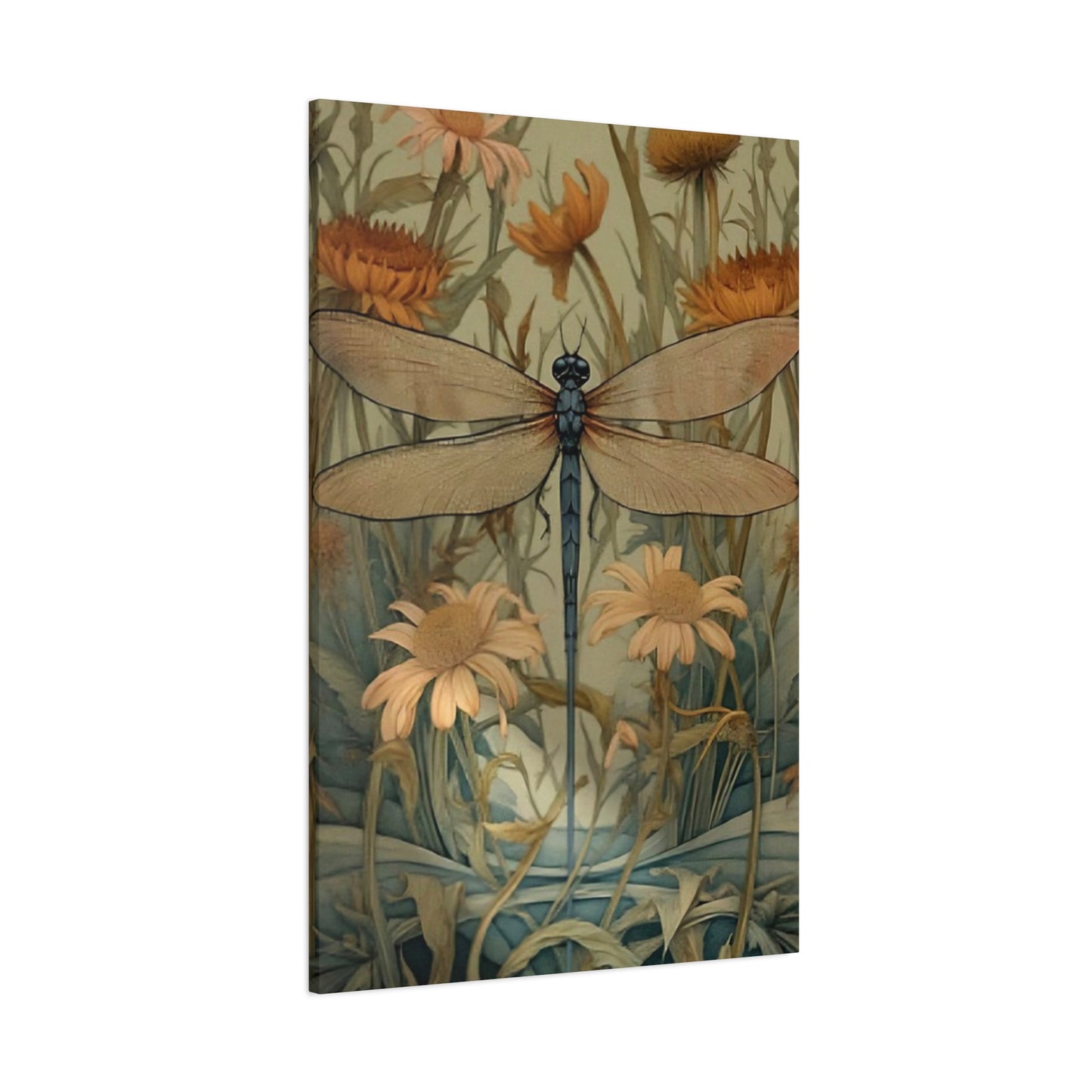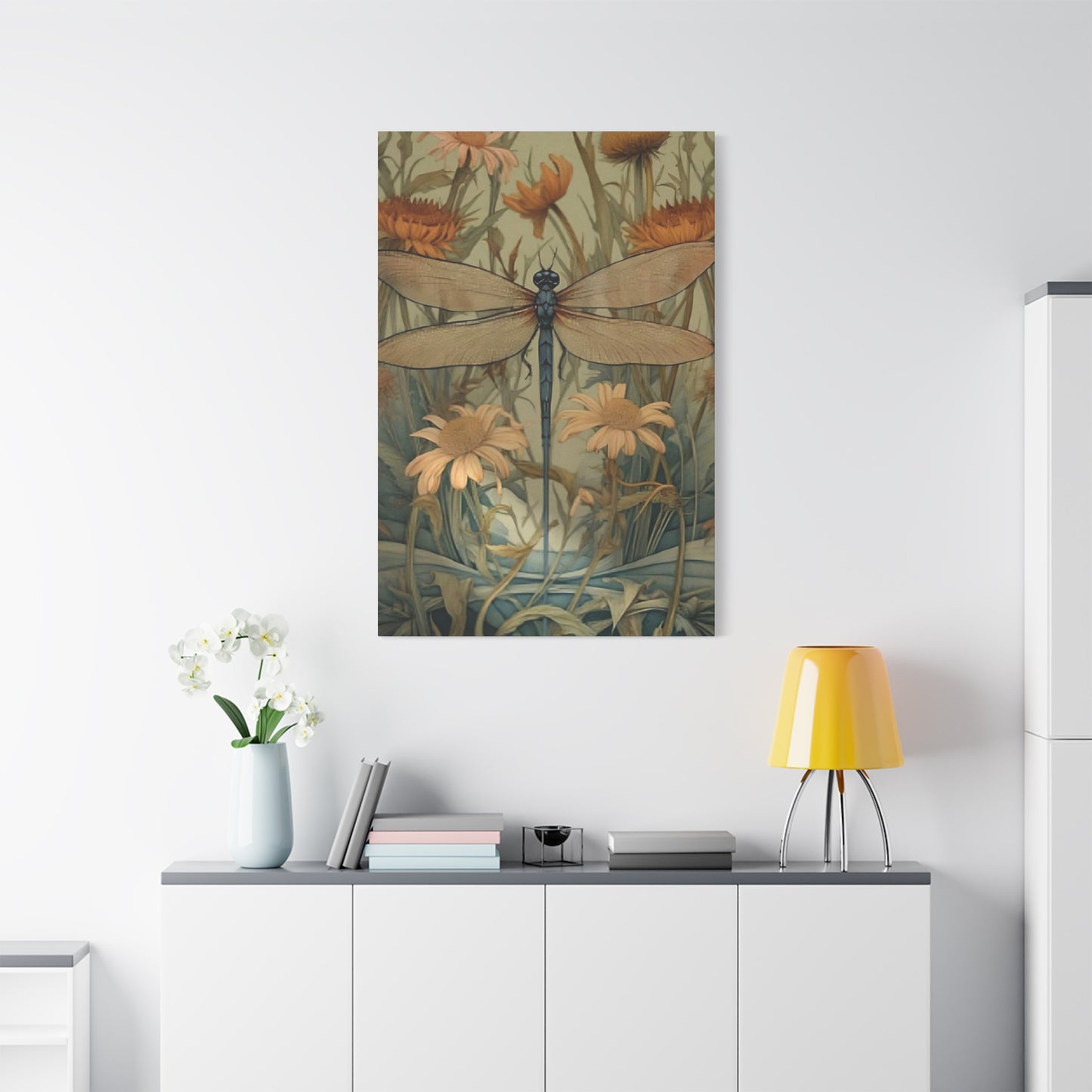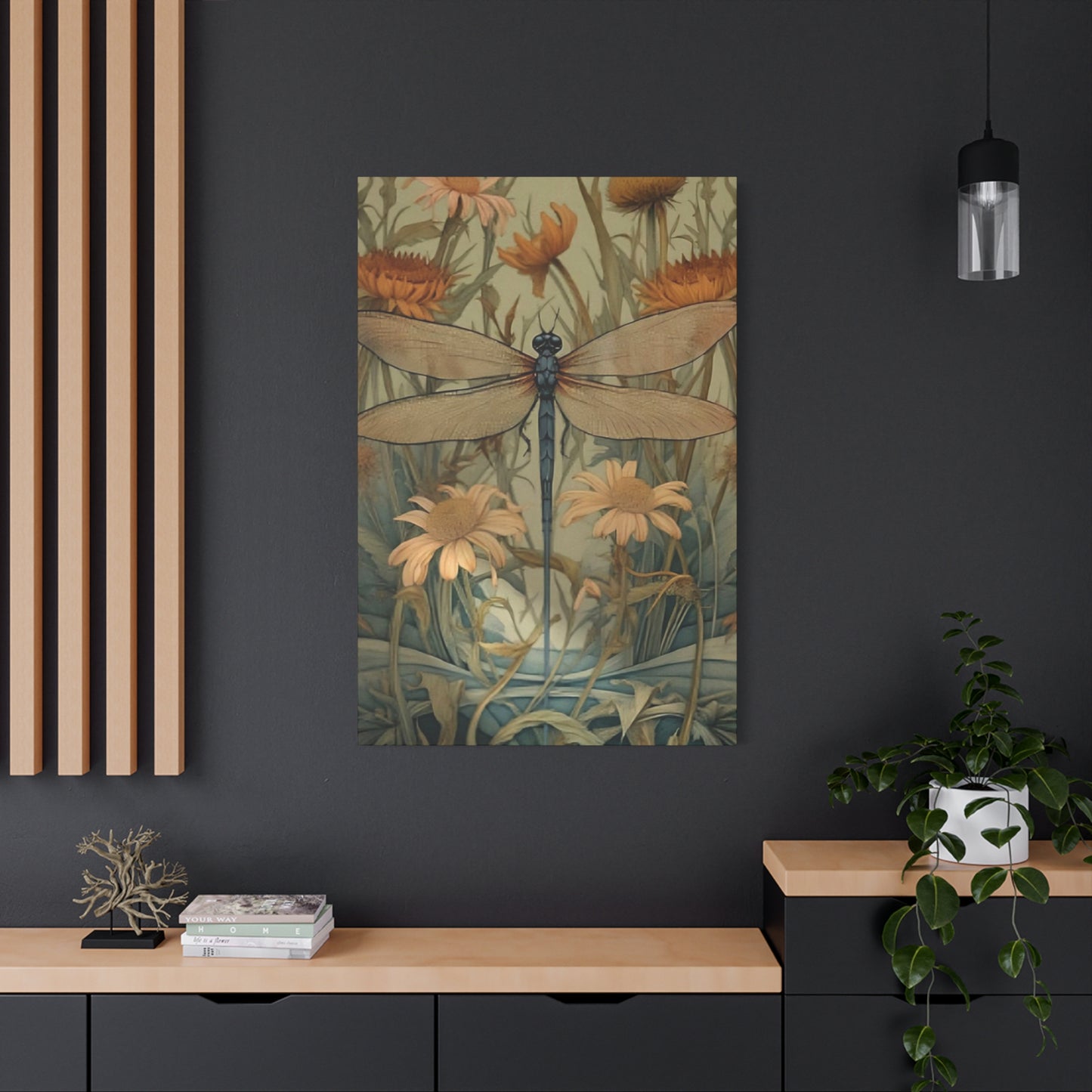Capturing the Delicacy of Dragonfly Wings in Wall Art Designs
Dragonflies have captured human imagination across diverse civilizations throughout history, serving as powerful symbols that transcend geographical boundaries. These ethereal creatures appear in the mythology, folklore, and artistic traditions of numerous cultures, each attributing unique meanings and significance to their presence.
In Japanese culture, dragonflies represent strength, courage, and happiness. The samurai warriors adopted the dragonfly as their symbol, believing these insects embodied the warrior spirit due to their inability to fly backward, representing moving forward in battle without retreat. Japanese art frequently depicts dragonflies in paintings, sculptures, and decorative objects, often accompanied by water lilies and flowing streams to emphasize their natural habitat.
Chinese traditions view dragonflies as symbols of prosperity, harmony, and good fortune. Ancient Chinese artists incorporated dragonfly motifs into porcelain designs, silk paintings, and architectural elements. The delicate balance of yin and yang is often represented through the dragonfly's dual nature—its ability to exist both in water during its larval stage and in air as an adult.
European folklore presents dragonflies with more mystical interpretations. Medieval Europeans sometimes associated these creatures with supernatural powers, believing they were companions to faeries or harbingers of change. Celtic traditions embrace dragonflies as symbols of transformation and adaptation, representing the soul's journey between different realms of existence.
Native American cultures across different tribes share reverence for dragonflies as messengers between the spirit world and earthly realm. Many tribes consider dragonfly encounters as signs of renewal and positive change. The intricate wing patterns of dragonflies inspired traditional beadwork, pottery designs, and ceremonial regalia among various Native American communities.
African cultures, particularly in regions near water sources, incorporate dragonfly symbolism into tribal art and storytelling. These cultures often associate dragonflies with rain-bringing spirits and agricultural prosperity, making them important figures in seasonal ceremonies and harvest celebrations.
Modern multicultural societies continue to embrace dragonfly symbolism, adapting ancient meanings to contemporary contexts. Urban artists worldwide draw inspiration from traditional interpretations while creating new symbolic associations that resonate with modern audiences.
Structural Marvel: Examining Dragonfly Wing Architecture
The intricate architecture of dragonfly wings represents one of nature's most sophisticated engineering achievements, inspiring both scientific research and artistic interpretation. These transparent membranes consist of complex networks that combine functionality with breathtaking beauty, making them frequent subjects for detailed artistic study.
Dragonfly wings feature a unique structural design comprising multiple layers of microscopic components. The wing membrane itself consists of thin, transparent chitin reinforced by an elaborate network of veins that provide both strength and flexibility. This vein pattern, known as venation, creates geometric patterns that artists have long admired and replicated in various mediums.
The wing's leading edge contains specialized structures called nodus and pterostigma that enhance flight efficiency. The nodus acts as a flexible joint allowing the wing to twist during flight, while the pterostigma serves as a counterbalance weight. These functional elements create visual focal points that artists often emphasize in their dragonfly representations.
Artists studying dragonfly wings discover remarkable color variations created by microscopic structures rather than pigmentation alone. The iridescent quality results from light interference patterns created by thin films and microscopic ridges on the wing surface. This phenomenon, known as structural coloration, produces the shifting rainbow effects that make dragonfly wings particularly challenging and rewarding subjects for painters and photographers.
The wing's transparency varies across different species, ranging from completely clear to various degrees of opacity with colored patches. Some species display intricate patterns of spots, bands, or gradients that serve specific biological functions while creating visually stunning compositions for artistic interpretation.
Wing shape varies significantly among dragonfly species, from narrow and elongated to broad and rounded. These variations reflect different flight capabilities and ecological niches, providing artists with diverse forms to explore in their work. The relationship between form and function in dragonfly wings offers rich material for both realistic and abstract artistic interpretations.
The delicate nature of dragonfly wings presents unique challenges for artists attempting to capture their essence. Traditional painting techniques must balance precision with softness to convey both the structural details and ephemeral quality of these remarkable appendages.
Metamorphosis and Transformation Through Dragonfly Imagery
Dragonflies embody the profound concept of transformation, making them powerful symbols for personal growth, spiritual evolution, and life transitions. Their complete metamorphosis from aquatic nymph to aerial adult provides rich metaphorical material that resonates across cultures and artistic traditions.
The dragonfly's transformation process mirrors human experiences of change and self-discovery. Beginning life as an underwater nymph, the creature eventually emerges from its aquatic environment, sheds its larval skin, and takes flight as a completely transformed being. This dramatic metamorphosis symbolizes breakthrough moments in human life—graduation, career changes, spiritual awakening, or overcoming personal challenges.
Artists frequently employ dragonfly imagery to represent transition periods in human experience. The moment of emergence from water can symbolize birth, rebirth, or breaking free from limiting circumstances. The subsequent flight represents freedom, new perspectives, and the ability to see life from elevated viewpoints.
Contemporary therapeutic art practices utilize dragonfly symbolism to help individuals process major life changes. Art therapists encourage clients to create dragonfly-inspired works as visual representations of their personal transformation journeys. The process of depicting metamorphosis helps individuals externalize internal changes and gain new insights into their growth processes.
In memorial art and grief counseling, dragonflies often represent the continuation of life beyond physical death. The transformation from earthbound larva to airborne adult provides comfort to those mourning loved ones, suggesting spiritual transcendence and eternal existence in different forms.
Business and organizational contexts increasingly adopt dragonfly symbolism to represent company evolution, rebranding efforts, or periods of significant change. Corporate art installations featuring dragonfly motifs communicate messages of adaptation, innovation, and forward progress to employees and stakeholders.
Personal development workshops and motivational speakers frequently reference dragonfly transformation as inspiration for individuals seeking positive life changes. The creature's ability to navigate both water and air environments symbolizes adaptability and resourcefulness in facing life's challenges.
Environmental conservation movements employ dragonfly transformation imagery to illustrate ecosystem resilience and the importance of protecting habitats that support complex life cycles. The dragonfly's dependence on both aquatic and terrestrial environments highlights interconnectedness and environmental stewardship.
Mastering Dragonfly Illustration: Artistic Techniques and Methods
Creating compelling dragonfly artwork requires understanding both the creature's physical characteristics and the artistic techniques best suited to capture their unique qualities. Successful dragonfly paintings combine technical skill with creative interpretation to convey these insects' ethereal beauty and dynamic energy.
Beginning artists should start with careful observation of dragonfly anatomy, studying photographs and live specimens when possible. Understanding the proportional relationships between the head, thorax, abdomen, and wings provides the foundation for accurate representation. The head typically measures about one-quarter of the total body length, while the wings span approximately twice the body length.
Color theory plays a crucial role in dragonfly painting, as these insects display complex color interactions through both pigmentation and structural coloration. Artists must master techniques for representing iridescent surfaces that shift color based on viewing angle and lighting conditions. Layering transparent glazes over reflective underpainting creates depth and luminosity that mimics natural dragonfly coloration.
Wing transparency requires special attention to painting technique. Artists often use dry brush methods, glazing, or watercolor techniques to achieve the delicate, gossamer quality of dragonfly wings. The challenge lies in suggesting structural details while maintaining the wing's transparent nature and avoiding overworking the surface.
Background selection significantly impacts dragonfly artwork effectiveness. Natural settings featuring water, reeds, or flowers provide contextual support, while minimal backgrounds allow focus on the insect's intricate details. Artists must balance environmental elements with the main subject to create harmonious compositions.
Light and shadow treatment in dragonfly paintings requires careful consideration of the creature's translucent qualities. Traditional shadow casting doesn't apply to transparent wings, necessitating subtle approaches to modeling form and creating depth. Artists often use reflected light and ambient illumination to suggest volume without heavy shadows.
Motion representation challenges artists to convey the dragonfly's flight characteristics through static imagery. Techniques include wing position variations, motion blur effects, or multiple exposure approaches that suggest the rapid wing movement characteristic of dragonfly flight patterns.
Detail versus impression decisions affect the overall impact of dragonfly artwork. Highly detailed scientific illustrations serve different purposes than impressionistic interpretations that capture mood and movement. Artists must determine their intended message and choose techniques accordingly.
Contemporary Abstract Interpretations of Dragonflies
Modern abstract art embraces dragonfly motifs as vehicles for exploring color, form, movement, and conceptual themes. Contemporary artists deconstruct traditional dragonfly imagery, reimagining these creatures through non-representational approaches that emphasize emotional and aesthetic rather than literal interpretation.
Abstract dragonfly art often focuses on the creature's essential qualities—lightness, transparency, movement, and transformation—rather than precise anatomical representation. Artists extract these characteristics and translate them into pure visual elements: flowing lines suggesting flight paths, transparent washes representing wing membranes, or geometric patterns inspired by wing venation.
Color field paintings derive inspiration from dragonfly iridescence, using large areas of shifting hues to evoke the optical phenomena observed in dragonfly wings. Artists layer translucent colors to create depth and luminosity that suggests the creature's ethereal qualities without literal representation.
Geometric abstraction finds rich source material in dragonfly wing patterns. The natural venation networks provide templates for complex linear compositions that maintain organic qualities while exploring mathematical relationships and structural beauty. These works often emphasize the intersection of natural design and geometric principles.
Kinetic and interactive installations translate dragonfly movement into three-dimensional experiences. Artists create suspended sculptures that respond to air currents, mimicking dragonfly flight characteristics. These installations invite viewer participation and create dynamic, ever-changing compositions that embody the creature's restless energy.
Digital art and new media explore dragonfly themes through computer-generated imagery, virtual reality experiences, and interactive projections. These technologies enable artists to create impossible dragonfly forms that transcend physical limitations while maintaining recognizable characteristics that connect to the source inspiration.
Mixed media approaches combine traditional painting techniques with unconventional materials to suggest dragonfly qualities. Artists incorporate metallic elements for iridescence, transparent materials for wing effects, or found objects that reference aquatic and aerial environments associated with dragonfly habitats.
Performance art draws inspiration from dragonfly movement patterns, translating flight characteristics into human movement vocabularies. Dancers and choreographers study dragonfly locomotion to develop new movement languages that capture the creature's unique combination of precision and grace.
Dragonfly-Inspired Jewelry: Design Principles and Applications
Jewelry design finds endless inspiration in dragonfly forms, translating the creature's delicate beauty and symbolic significance into wearable art. Successful dragonfly jewelry balances realistic representation with stylistic interpretation while considering practical wearability factors.
Wing representation presents the primary design challenge in dragonfly jewelry. Designers employ various techniques to suggest transparency and delicacy, including filigree metalwork, mesh construction, or transparent materials like resin, glass, or crystal. The goal involves creating wing structures that appear fragile while maintaining sufficient durability for regular wear.
Scale considerations affect design decisions significantly. Realistic proportions often prove impractical for jewelry applications, necessitating stylistic adaptations that maintain dragonfly recognition while ensuring comfortable wear. Designers typically elongate or simplify forms to suit specific jewelry categories.
Material selection plays crucial roles in dragonfly jewelry effectiveness. Precious metals provide durability and value while offering various color options through gold alloys or surface treatments. Alternative materials like titanium or stainless steel enable lightweight construction suitable for larger pieces.
Gemstone incorporation enhances dragonfly jewelry appeal through color and sparkle that suggests iridescent wing qualities. Designers often choose stones that shift color or display optical phenomena reminiscent of natural dragonfly coloration. Arrangement patterns frequently echo wing venation or body segmentation.
Technical construction methods vary based on intended jewelry type and production scale. Hand-fabricated pieces allow maximum artistic freedom but limit production quantities. Cast jewelry enables mass production while maintaining design consistency. Mixed approaches combine casting with hand-finished details for optimal results.
Cultural sensitivity requires consideration when designing dragonfly jewelry, particularly when incorporating symbolic elements from specific cultural traditions. Designers must balance commercial appeal with respectful treatment of cultural meanings and avoid inappropriate appropriation of sacred symbolism.
Market positioning affects design approaches significantly. High-end designer pieces allow for maximum artistic expression and premium materials, while mass-market jewelry requires cost-effective construction methods and broader appeal factors.
Dragonflies in Global Folklore and Mythological Traditions
Folklore traditions worldwide feature dragonflies as significant characters in stories that explain natural phenomena, convey moral lessons, and preserve cultural wisdom. These tales reveal diverse cultural attitudes toward dragonflies while demonstrating the universal human tendency to find meaning in natural observations.
European folklore presents varied dragonfly interpretations ranging from benevolent to ominous. Some traditions associate dragonflies with faeries, describing them as mounts for tiny supernatural beings or transformed faeries themselves. Other stories warn of dragonflies as omens of impending change or messengers from otherworldly realms.
Scandinavian legends describe dragonflies as companions to trolls and other mystical forest creatures. These stories often feature dragonflies leading lost travelers to safety or guiding them away from dangerous supernatural encounters. The insects' ability to navigate between water and air makes them ideal intermediaries between different realms.
Asian folklore extensively features dragonflies in creation myths and moral tales. Japanese stories describe dragonfly islands where these creatures gather in massive swarms, creating magical places where time moves differently. Chinese legends tell of dragonflies carrying messages between lovers separated by great distances.
Native American traditions across different tribes share common themes regarding dragonfly spiritual significance. Many stories describe dragonflies as souls of deceased ancestors visiting living relatives. Other tales feature dragonflies as teachers who help humans understand the importance of living in the present moment.
African folklore incorporates dragonflies into seasonal stories that explain weather patterns and agricultural cycles. These tales often personify dragonflies as rain spirits who control water availability for crops. Some traditions describe dragonfly dances that summon storms or end droughts.
Contemporary urban legends adapt traditional dragonfly folklore to modern contexts. Internet communities share stories of dragonfly encounters preceding significant life events or dragonfly swarms appearing at meaningful moments. These modern myths demonstrate the continuing relevance of dragonfly symbolism.
Therapeutic storytelling utilizes traditional dragonfly folklore to help individuals process personal challenges. Counselors and therapists reference these tales to provide framework for understanding change, resilience, and spiritual growth through metaphorical interpretation.
Dragonfly Tattoo Artistry: Symbolic Meanings and Design Variations
Dragonfly tattoos represent popular choices for individuals seeking meaningful body art that combines aesthetic beauty with personal significance. These designs offer versatility in style, placement, and symbolic interpretation while providing opportunities for artistic creativity and individual expression.
Traditional dragonfly tattoo meanings often emphasize transformation and personal growth. Clients frequently choose these designs to commemorate significant life changes, spiritual awakenings, or periods of personal development. The metamorphosis symbolism resonates particularly strongly with individuals overcoming addiction, illness, or major life transitions.
Memorial dragonfly tattoos serve as tributes to deceased loved ones, particularly when the imagery incorporates specific colors, dates, or accompanying elements that reference the remembered person. Many clients find comfort in the belief that dragonflies represent visiting spirits or continuing presence beyond physical death.
Artistic style variations provide extensive options for dragonfly tattoo designs. Realistic representations emphasize anatomical accuracy and natural coloration, often incorporating environmental elements like water or plants. Traditional tattoo styles feature bold outlines and simplified forms with classic color palettes.
Watercolor tattoo techniques create ethereal dragonfly designs that emphasize the creature's translucent qualities through flowing colors and soft edges. These styles often eliminate traditional outlines in favor of color-based definition that mimics watercolor painting techniques.
Geometric dragonfly tattoos abstract the creature's form into angular patterns and mathematical relationships. These designs appeal to clients interested in sacred geometry or modern minimalist aesthetics while maintaining recognizable dragonfly characteristics.
Placement considerations affect dragonfly tattoo design approaches. Shoulder blade locations accommodate larger, more detailed designs with spread wings. Wrist or ankle placements require simplified forms that remain recognizable at smaller scales.
Cultural elements enhance dragonfly tattoo meanings through incorporation of specific symbolic systems. Celtic knotwork, mandala patterns, or Japanese design elements add layers of cultural significance while creating unique artistic combinations.
Resilience and Strength: Dragonfly Symbolism in Personal Development
Dragonflies exemplify resilience through their remarkable ability to adapt to diverse environments and overcome challenges throughout their complex life cycles. This natural resilience makes dragonfly symbolism particularly relevant for personal development contexts and motivational frameworks.
The dragonfly's multi-stage life cycle demonstrates progressive adaptation to changing circumstances. Beginning as aquatic nymphs, these creatures develop survival skills for underwater existence before transitioning to aerial adults with completely different environmental requirements. This adaptability inspires individuals facing major life transitions or career changes.
Physical resilience characteristics of dragonflies include their ability to continue flying with damaged wings and their capacity to recover from temporary setbacks. These qualities translate into metaphors for human persistence and the ability to maintain forward momentum despite obstacles or partial failures.
Environmental resilience factors make dragonflies indicators of ecosystem health while demonstrating remarkable recovery abilities following habitat disruption. Their presence indicates clean water and stable ecosystems, while their return to restored habitats demonstrates nature's regenerative powers.
Psychological resilience concepts draw inspiration from dragonfly behavior patterns. Their hunting strategies require quick decision-making and rapid response to changing conditions. Their territorial behaviors demonstrate the importance of establishing boundaries while remaining flexible in approach.
Personal development workshops frequently use dragonfly meditation exercises to help participants visualize their own transformation processes. These visualizations often involve imagining the emergence from limiting circumstances, similar to the nymph's emergence from water into flight.
Recovery programs adopt dragonfly symbolism to represent the journey from addiction to sobriety. The creature's transformation from restricted aquatic existence to liberated aerial life provides powerful metaphors for breaking free from destructive patterns and embracing new possibilities.
Business coaching applications utilize dragonfly resilience concepts to help professionals navigate workplace challenges and career transitions. The insect's ability to thrive in different environments provides models for professional adaptability and continuous learning approaches.
Literary and Poetic Interpretations of Dragonflies
Literature and poetry extensively feature dragonflies as symbols, metaphors, and subjects that convey complex emotions and philosophical concepts. These creatures appear in works ranging from classical poetry to contemporary fiction, serving various narrative and thematic functions.
Romantic poetry often employs dragonfly imagery to represent fleeting beauty and the transient nature of life's precious moments. The creature's brief adult lifespan provides metaphors for appreciating present experiences and recognizing life's ephemeral qualities.
Children's literature frequently features dragonflies as friendly characters who teach lessons about courage, friendship, and environmental stewardship. These stories often emphasize the dragonfly's helpful nature and positive associations with summer and outdoor adventures.
Contemporary fiction utilizes dragonfly symbolism to represent character development and plot progression. Authors may introduce dragonfly encounters at pivotal story moments to suggest impending change or spiritual significance for characters undergoing personal transformation.
Haiku and other brief poetic forms find ideal subjects in dragonflies, whose presence can capture entire seasonal moments or emotional states. The creature's association with water and summer makes it particularly suitable for nature poetry that emphasizes sensory experience and momentary observation.
Ecological literature incorporates dragonflies as indicators of environmental health and symbols of humanity's relationship with nature. These works often use dragonfly populations as barometers for ecosystem stability and human environmental impact.
Spiritual and religious literature draws upon dragonfly transformation symbolism to explore themes of death, rebirth, and spiritual evolution. The creature's metamorphosis provides accessible metaphors for complex theological concepts and personal spiritual experiences.
Therapeutic writing exercises often encourage participants to write about dragonfly encounters or to use dragonfly metaphors to explore personal growth experiences. These exercises help individuals articulate their own transformation processes through creative expression.
Understanding Dragonfly Wing Coloration and Optical Phenomena
The spectacular colors displayed by dragonfly wings result from complex optical phenomena rather than simple pigmentation, creating one of nature's most sophisticated color systems. These mechanisms produce the shifting, iridescent hues that have fascinated artists and scientists throughout history.
Structural coloration occurs when microscopic wing structures interact with light to produce colors through interference, diffraction, and reflection rather than pigment absorption. This system enables dragonflies to display colors that shift based on viewing angle and lighting conditions, creating the rainbow effects artists attempt to capture.
Thin film interference produces many dragonfly wing colors through layers of transparent materials with different refractive indices. When light passes through these layers, some wavelengths reinforce each other while others cancel out, producing pure, saturated colors that change as the viewing angle shifts.
Multilayer reflectors in dragonfly wings create metallic appearances and intense color saturation. These structures consist of alternating layers of materials with different optical properties, functioning as biological mirrors that produce brilliant metallic sheens.
Photonic crystals found in some dragonfly species create structural colors through periodic microscopic arrangements that selectively reflect specific wavelengths. These natural photonic devices produce some of the most intense and pure colors found in the animal kingdom.
Pigmented colors provide base coloration that combines with structural effects to create complex color interactions. While structural coloration dominates dragonfly wing appearance, pigments contribute to overall color schemes and help create species-specific patterns.
Environmental factors influence color perception in dragonfly wings. Humidity, temperature, and lighting conditions all affect how structural colors appear to observers. Artists must consider these variables when attempting to represent dragonfly colors accurately.
Age-related changes affect dragonfly wing coloration as structural elements degrade over time. Older specimens often display different color characteristics than newly emerged adults, providing artists with various color possibilities to explore in their work.
Environmental Indicators: Dragonflies and Ecosystem Health
Dragonflies serve as valuable bioindicators that reflect environmental quality and ecosystem health through their presence, abundance, and species diversity. Their sensitivity to water quality and habitat conditions makes them important subjects for environmental art and conservation messaging.
Water quality sensitivity makes dragonflies excellent indicators of aquatic ecosystem health. Their aquatic larval stages require clean water with adequate oxygen levels and minimal pollution. Changes in dragonfly populations often signal water quality problems before other indicators become apparent.
Habitat requirements encompass both aquatic and terrestrial environments, making dragonflies sensitive to landscape-level environmental changes. Their dependence on multiple habitat types means that development, agriculture, and climate change significantly impact dragonfly populations.
Pesticide impacts affect dragonfly populations through direct toxicity and indirect effects on prey species. Agricultural chemical use in watersheds often correlates with declining dragonfly diversity, making these insects valuable monitors of pesticide environmental impact.
Climate change effects influence dragonfly distribution, breeding timing, and habitat availability. Rising temperatures alter aquatic habitats while changing precipitation patterns affect breeding site availability. These impacts provide early warnings of broader climate effects.
Urban development impacts dragonfly populations through habitat destruction, water pollution, and landscape fragmentation. However, well-designed urban water features can support dragonfly populations and contribute to urban biodiversity conservation.
Conservation applications utilize dragonfly monitoring to assess habitat restoration success and guide management decisions. The return of diverse dragonfly communities to restored wetlands indicates ecosystem recovery and successful conservation efforts.
Citizen science programs engage public participation in dragonfly monitoring and conservation. These programs combine scientific data collection with environmental education, using dragonfly appeal to engage volunteers in broader conservation efforts.
Photographic Techniques for Capturing Dragonfly Movement
Photographing dragonflies in motion presents unique technical challenges that require specialized equipment and techniques. Success depends on understanding dragonfly behavior patterns, mastering appropriate camera settings, and developing strategies for approaching these alert and rapidly moving subjects.
Equipment selection significantly impacts dragonfly photography success. Macro lenses enable close-up work while maintaining working distances that avoid disturbing subjects. Telephoto lenses allow greater working distances but may require image stabilization to counteract camera shake at high magnifications.
Shutter speed considerations balance freezing motion with maintaining adequate exposure. Fast shutter speeds stop wing movement but require high ISO settings or bright lighting conditions. Slower speeds can create motion blur effects that suggest movement while maintaining detail in stationary body parts.
Focus tracking techniques help maintain sharp focus on moving dragonflies. Continuous autofocus modes combined with appropriate focus point selection enable photographers to follow subjects through frame while maintaining critical sharpness on key anatomical features.
Flash photography provides consistent lighting and enables fast shutter speeds but requires careful technique to avoid harsh shadows or unnatural appearances. Fill flash techniques balance ambient lighting with supplemental illumination to maintain natural-looking results.
Behavioral understanding improves photographic success rates. Dragonflies often return to favorite perches, patrol territorial boundaries, or follow predictable hunting patterns. Observing these behaviors enables photographers to position themselves advantageously.
Background consideration affects image impact significantly. Cluttered backgrounds distract from subjects while clean, complementary backgrounds enhance dragonfly visibility. Photographers often use wide apertures to blur backgrounds or seek natural settings that provide visual separation.
Ethical considerations ensure minimal impact on dragonfly subjects and their habitats. Responsible photographers avoid disturbing nesting areas, limit pursuit time, and prioritize subject welfare over photographic opportunities.
Handcrafted Dragonfly Decorations for Interior Spaces
Creating handmade dragonfly decorations allows individuals to incorporate natural beauty and symbolic meaning into their living spaces through personalized craft projects. These DIY approaches offer creative expression opportunities while developing practical making skills.
Paper craft techniques provide accessible entry points for dragonfly decoration projects. Tissue paper, crepe paper, or specialty craft papers can be shaped into translucent wings while paper strips or wire create body structures. These lightweight decorations work well as hanging mobiles or wall mounted displays.
Fabric applications utilize various textile techniques to create dragonfly decorations with different textures and visual effects. Sheer fabrics like organza or tulle suggest wing transparency while metallic threads add sparkle that mimics natural iridescence.
Wire sculpting enables three-dimensional dragonfly forms that can be positioned throughout living spaces. Craft wire provides structure while beads, fabric, or paper elements add color and texture. These sculptures work effectively as garden decorations or indoor accent pieces.
Recycled materials offer sustainable approaches to dragonfly craft projects. Plastic bottles can become wing templates, while bottle caps serve as body segments. These eco-friendly approaches combine environmental consciousness with creative expression.
Stained glass techniques create luminous dragonfly decorations that interact beautifully with natural light. While traditional leaded glass requires specialized skills, faux stained glass approaches using transparent paints achieve similar effects with greater accessibility.
Embroidery and needlework applications incorporate dragonfly motifs into functional items like pillows, wall hangings, or table runners. These approaches combine decorative appeal with practical utility while showcasing traditional craft skills.
Seasonal adaptation allows dragonfly decorations to coordinate with changing interior themes throughout the year. Spring versions might emphasize fresh greens and clear blues, while autumn interpretations could incorporate warmer colors that suggest seasonal changes.
Garden Design Integration with Dragonfly Themes
Incorporating dragonfly themes into garden design creates environments that attract these beneficial insects while celebrating their aesthetic and symbolic appeal. Successful dragonfly gardens balance practical habitat requirements with artistic design principles.
Water feature requirements provide essential habitat components for dragonfly reproduction and hunting. Ponds, streams, or constructed wetlands must include shallow areas for egg laying, vegetation for nymph habitat, and open water for adult hunting territories.
Plant selection supports dragonfly populations while creating appropriate visual contexts for themed gardens. Marginal plants like cattails and water iris provide nymph habitat, while flowering plants attract prey insects that support adult dragonfly populations.
Hardscape elements can incorporate dragonfly motifs through sculptural installations, decorative panels, or pathway designs. These permanent features provide year-round thematic continuity even when live dragonflies are not present.
Maintenance considerations ensure long-term success of dragonfly habitat gardens. Water quality management, vegetation control, and seasonal cleanup routines maintain environmental conditions that support dragonfly populations while preserving garden aesthetics.
Seasonal interest planning accounts for dragonfly activity patterns throughout the year. Peak adult activity during summer months should coincide with maximum garden visual impact, while winter interest maintains appeal during dormant periods.
Educational components can transform dragonfly gardens into learning environments that teach visitors about ecology, life cycles, and conservation. Interpretive signage, demonstration areas, and interactive elements enhance visitor understanding and engagement.
Integration challenges arise when balancing habitat requirements with aesthetic preferences. Natural habitat features may conflict with formal design approaches, requiring creative solutions that serve both functional and visual purposes.
Mindfulness Practices Using Dragonfly Observations
Dragonfly observation provides excellent opportunities for mindfulness practice, combining nature connection with meditation techniques that enhance present-moment awareness and emotional regulation. These practices utilize the dragonfly's symbolic associations with transformation and lightness.
Present moment awareness develops through careful attention to dragonfly behavior and environmental interactions. Observing hunting patterns, flight characteristics, and territorial behaviors requires sustained attention that naturally cultivates mindfulness skills.
Breathing meditation can incorporate dragonfly imagery through visualization exercises that imagine the breath as light and ethereal as dragonfly flight. These techniques combine respiratory focus with symbolic imagery to deepen meditative experience.
Movement meditation draws inspiration from dragonfly flight patterns to create flowing movement sequences that embody lightness and grace. Participants imagine moving through space with dragonfly-like precision and freedom.
Seasonal awareness practices use dragonfly life cycle observations to develop appreciation for natural rhythms and cyclical changes. Following dragonfly populations through annual patterns creates connections to larger environmental cycles.
Emotional regulation techniques utilize dragonfly transformation symbolism to help individuals process difficult emotions and life changes. The metaphor of metamorphosis provides frameworks for understanding personal growth and healing.
Group meditation sessions can incorporate shared dragonfly observations as focal points for collective mindfulness practice. These sessions combine individual awareness development with community building around shared natural experiences.
Walking meditation practices combine dragonfly observation with mindful movement through natural environments. Participants learn to maintain awareness while moving slowly through dragonfly habitats, developing skills that transfer to daily life situations.
Traditional Asian Artistic Representations of Dragonflies
Asian artistic traditions extensively feature dragonflies across multiple mediums and cultural contexts, reflecting deep cultural appreciation for these creatures' aesthetic and symbolic qualities. These representations span centuries of artistic development and continue influencing contemporary Asian art.
Chinese painting traditions incorporate dragonflies into landscape compositions that emphasize harmony between different natural elements. Classical Chinese artists positioned dragonflies within larger compositions featuring water, plants, and other wildlife to create balanced, naturalistic scenes.
Japanese woodblock printing frequently features dragonflies as subjects for detailed study and artistic interpretation. Master printmakers developed specialized techniques for representing dragonfly transparency and iridescence through careful color layering and registration precision.
Korean ceramic traditions incorporate dragonfly motifs into functional and decorative pottery through various glazing and painting techniques. These applications range from subtle textural elements to bold decorative statements that celebrate dragonfly beauty.
Vietnamese lacquer work utilizes dragonfly imagery in decorative panels and furniture through mother-of-pearl inlay techniques that capture natural iridescence. These applications combine traditional craft skills with contemporary design sensibilities.
Thai temple art includes dragonfly motifs in architectural decoration and religious artwork that connects natural beauty with spiritual significance. These applications often incorporate dragonfly transformation symbolism into larger narrative contexts.
Contemporary Asian artists continue exploring dragonfly themes through modern mediums and techniques while maintaining connections to traditional approaches. Digital art, installation work, and mixed media approaches expand possibilities for dragonfly artistic interpretation.
Cultural preservation efforts document traditional dragonfly artistic techniques to ensure their continuation for future generations. These programs combine artistic education with cultural heritage preservation to maintain traditional knowledge systems.
Textile Design Applications Featuring Dragonfly Patterns
Dragonfly motifs translate effectively into textile applications across various production methods and fabric types, offering designers versatile pattern elements that combine natural beauty with symbolic meaning. These applications range from traditional weaving techniques to contemporary digital printing processes.
Traditional weaving incorporates dragonfly patterns through jacquard techniques that create dimensional effects suggesting wing textures and body structures. These approaches require careful planning to translate design elements into weaveable patterns while maintaining visual recognition.
Screen printing enables bold dragonfly graphic applications on various fabric types with excellent color control and repeatability. Designers can create layered effects that suggest transparency and iridescence through careful color selection and overlay techniques.
Digital textile printing allows photorealistic dragonfly representations with unlimited color possibilities and precise detail reproduction. These technologies enable designers to incorporate photographic imagery or create complex artistic interpretations without technical printing limitations.
Embroidery applications add dimensional qualities to dragonfly textile designs through various stitching techniques and thread selections. Machine embroidery enables precise, repeatable results while hand embroidery allows unique artistic interpretation and customization.
Batik and resist-dyeing techniques create unique dragonfly patterns through controlled color application and removal processes. These methods produce organic, flowing effects that complement dragonfly natural characteristics while creating distinctive textile appearances.
Fabric painting allows direct artistic application of dragonfly imagery onto textile surfaces through brushwork techniques similar to paper or canvas painting. These approaches enable one-of-a-kind textile artworks with maximum artistic freedom.
Pattern repeat considerations affect how dragonfly motifs function in continuous textile applications. Designers must balance visual interest with practical production requirements while ensuring patterns work effectively across various scales and applications.
Aquatic Connections: Dragonflies and Water Element Symbolism
Dragonflies maintain profound connections to water through their biology and cultural symbolism, making them powerful representatives of aquatic energy and water element characteristics. These associations appear across multiple cultural traditions and artistic interpretations.
Biological water dependence begins during dragonfly larval stages when nymphs spend months or years developing in aquatic environments. This extended aquatic phase creates strong symbolic associations between dragonflies and water element properties including emotion, intuition, and subconscious awareness.
Cultural water symbolism incorporates dragonflies as messengers between conscious and unconscious realms, reflecting their transition from underwater nymphs to aerial adults. Many traditions associate this transformation with spiritual awakening or emotional breakthrough.
Feng shui applications utilize dragonfly symbolism to enhance water element energy in living spaces. Dragonfly imagery near water features or in areas corresponding to water element directions can strengthen beneficial energy flow and emotional balance.
Artistic water themes frequently incorporate dragonfly imagery to suggest fluidity, reflection, and emotional depth. These compositions often emphasize the relationship between dragonfly subjects and their aquatic environments through composition and color choices.
Meditation practices combine dragonfly and water imagery to explore emotional healing and spiritual cleansing themes. Visualizations may involve dragonflies emerging from healing waters or dancing above flowing streams to suggest emotional release and renewal.
Environmental connections highlight dragonfly dependence on clean water sources and healthy aquatic ecosystems. These relationships make dragonflies valuable symbols for water conservation and environmental protection messaging.
Seasonal associations connect dragonfly activity with water cycles and precipitation patterns. Spring emergence coincides with snowmelt and increased water availability while autumn abundance reflects summer water accumulation in breeding habitats.
Conclusion:
Dragonfly wing-inspired wall art brings a sense of lightness, elegance, and symbolic depth into any space. With their intricate patterns and translucent beauty, dragonfly wings are a natural muse for artists and designers seeking to create artwork that feels both ethereal and meaningful. Capturing their delicacy in wall art not only highlights the fine details of nature but also infuses interiors with a sense of transformation, freedom, and grace.
These designs often blend soft lines, shimmering textures, and layered color palettes to mimic the light-catching qualities of real wings. Whether showcased through minimalist line art, watercolor prints, or metallic accents, dragonfly-themed wall art introduces a refined, nature-inspired aesthetic that works beautifully in tranquil spaces like bedrooms, meditation rooms, or reading nooks.
Symbolically, dragonflies represent change, adaptability, and living in the moment—making their presence in your home more than just decorative. They serve as gentle reminders to embrace life's transitions and to find beauty in fleeting, delicate moments. This emotional resonance, combined with their visual charm, makes dragonfly wing wall art a powerful addition to personal and peaceful interior spaces.
In essence, capturing the delicacy of dragonfly wings in wall art is a celebration of both nature's detail and life's deeper meanings. It brings light, movement, and quiet strength to your walls—transforming everyday spaces into serene sanctuaries filled with beauty and inspiration.

















